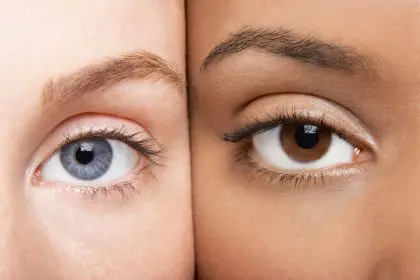Kissing is a universal form of expressing affection and love, but did you know there are different types of kisses, each with its unique meaning? From a gentle peck on the cheek to a passionate French kiss, understanding the nuances of each type can deepen your connection with others and add layers of meaning to your relationships. In this article, we’ll explore five types of kisses and what they signify.
1. The Forehead Kiss
A forehead kiss is a sweet and tender gesture that conveys a sense of care and protection. Often shared between parents and children, close friends, or romantic partners, this kiss is a way of expressing love that goes beyond physical attraction. It signifies respect, admiration, and deep emotional bonding.
Meaning: The forehead kiss is often seen as a sign of reassurance and comfort. It’s a way of saying “I’m here for you” without needing words. This kiss is nurturing and often associated with long-term relationships where emotional intimacy is intense.
2. The Cheek Kiss
The cheek kiss varies in meaning depending on cultural context, but it generally symbolizes friendship, greeting, or goodbye. In many European countries, a cheek kiss is a standard greeting among friends and family. It can also indicate politeness and respect in more formal settings.
Meaning: A cheek kiss can range from a friendly gesture to a more intimate sign of affection. It’s a versatile kiss that can be used in personal and professional contexts, reflecting the relationship’s nature and the cultural background of the individuals involved.
3. The Eskimo Kiss
An Eskimo kiss involves rubbing noses together instead of the traditional lip-to-lip contact. This playful and innocent gesture is often shared between parents and children or between romantic partners in a fun, lighthearted moment.
Meaning: The Eskimo kiss signifies a deep bond and a sense of playful intimacy. It’s a way of connecting with someone sweet and affectionately, highlighting the joy and warmth in the relationship.
4. The French Kiss
The French kiss is one of the most passionate forms of kissing. It involves using tongues to explore each other’s mouths. This kiss is usually reserved for romantic partners and strongly indicates physical attraction and desire.
Meaning: The French kiss symbolizes deep passion and sexual desire. It is an intimate act that can strengthen the physical and emotional connection between partners, often used to express love and longing more intensely.
5. The Hand Kiss
A hand kiss is a gesture of respect, admiration, and sometimes romantic interest. It involves lightly kissing the back of someone’s hand, often seen in formal settings or historical contexts. Although it’s less common today, it still carries a sense of old-world charm and politeness.
Meaning: The hand kiss conveys admiration and deep respect. It can also be a way of showing romantic interest in a subtle and gentlemanly manner. This kiss is elegant and signifies a certain level of decorum and esteem.
The Significance of Kisses in Different Cultures
Kissing practices can vary significantly across cultures, adding another layer of meaning to each type of kiss. In some cultures, a kiss on both cheeks is a standard greeting, while public displays of affection might be frowned upon in others. Understanding these cultural differences is crucial in interpreting the meaning behind a kiss.
Western Cultures: In many Western societies, kisses are a common way to show love and affection between partners, family, and friends. Romantic kisses, especially, are a significant part of dating and relationships.
Eastern Cultures: In some Eastern cultures, public displays of affection, including kissing, are less common. A kiss might be reserved for more private moments, and other forms of nonverbal communication might be used to express affection.
Latin Cultures: In many Latin cultures, kisses on the cheek are a standard greeting among friends and family. This practice reflects the warm and affectionate nature of these cultures.
The Science Behind Kissing
Kissing isn’t just a social or cultural phenomenon; it also has a scientific basis. When we kiss, our bodies release chemicals that affect our moods and emotions. These chemicals include oxytocin, also known as the “love hormone,” which helps strengthen social bonds and create a sense of connection and trust.
Oxytocin: This hormone is released during physical touch, including kissing, and plays a significant role in bonding and attachment. It helps to create a feeling of closeness and can even reduce stress and anxiety.
Dopamine: Often referred to as the “pleasure hormone,” dopamine is released when we experience something enjoyable, such as kissing. It contributes to feelings of happiness and euphoria, reinforcing positive experiences.
Serotonin: This neurotransmitter helps regulate mood and is associated with well-being and happiness. Kissing can help to balance serotonin levels, contributing to overall emotional health.
How to Make Your Kisses More Meaningful
Understanding the different types of kisses and their meanings can help you to communicate more effectively through physical affection. Here are some tips on how to make your kisses more meaningful:
- Be Present: Focus on the moment and the person you are kissing. Being fully present can enhance the emotional connection.
- Understand Context: Consider the relationship and the situation. A forehead kiss might be more appropriate for comforting someone, while a French kiss is suited for more intimate moments.
- Pay Attention to Cues: Your partner’s body language and response can guide you on how to proceed. Respect their comfort level and preferences.
- Mix It Up: Don’t be afraid to vary the types of kisses you use. Different kisses can convey different messages and keep your relationship dynamic and engaging.
Conclusion
Kissing is an assertive non-verbal communication that can express many emotions and intentions. Each type carries its unique meaning and significance, from the gentle forehead kiss to the passionate French kiss. Understanding these nuances can deepen your connections and enhance your relationships. Whether it’s a kiss of comfort, friendship, or passion, kissing is a universal way to show that you care.
This story was created using AI technology.















